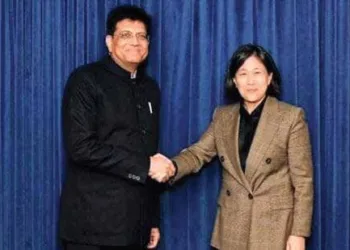Vish Dhamija on why he writes crime fiction and a peek-a-boo into his latest offering
BY RUKMA SALUJA
Vish Dhamija is a London-based author of nine crime fiction novels, and frequently quoted in the Indian press as “master of crime and courtroom drama” and “India’s best page- turner”. He is responsible for stimulating the legal fiction genre in India and is the only author of Indian origin listed among the major legal thriller writers of the world. He talks to Pravasi Indians:
Why did you turn to writing about crime, of all the subjects you could have chosen?
I’ve been reading crime fiction since before I knew it was classified as crime fiction. And I am reasonably sure everyone else has been in the same boat without realising it. From the Phantom comics to Scooby Doo to Tintin to Asterix to The Secret Seven to Hardy Boys… they were all crime fiction in some form. Then came Agatha Christie and Arthur Conan Doyle and so, the first story I penned was — surprise, surprise! — crime fiction.
What’s the first thing you do when you get an idea?
I jot it down. In this digital age you always have your phone at hand to make notes. Then I expand the idea for an in-depth analysis. The pros and cons. How can I develop it into a viable plot that is interesting enough to keep readers engaged until the very end? Ideas are mere bones. You need skin and flesh to turn them into a worthwhile story. One needs to think of the characters that will play out that story. A large majority of ideas don’t make it beyond the drawing board, but a few do. However, once I decide on the what and why and how, I start writing.
What sort of crime have you tackled in this book (Prisoner’s Dilemma)?
Prisoner’s Dilemma is a psychological thriller. The story starts after the crime (burglary) has been committed, and the police has arrested the suspects. The book deals with how the police questions the two suspects, using the concept of prisoner’s dilemma from game theory.
Two friends, Bipin Desai and Anuj Shastri, concoct a plan to rob a van full of cash and manage to get away with loot of over one crore rupees. They are arrested within days, but the cash is still nowhere to be found. Senior Inspector Arfy Khan has 48 hours to make Bipin and Anuj confess to their crime by convincing one of them to go against the other. The two friends only have to keep their calm and their stories straight in front of the police. But there is one major obstacle: Arfy isn’t allowing Bipin and Anuj or their lawyers to see or talk to each other. It is a mind game from then on, pure psychological manipulation.
Do you have to work at the plot or do you already know the twists and red herrings? Like I mentioned earlier, I toy with the initial idea for a while before taking it to the next stage. The theme — the skeletal plot — has already taken form before I begin. However, the subplots, the
twists, the red herrings and supporting characters find their way into the narrative as the story moves along. You might have heard this before — and it’s true — once I develop the characters, they very much have lives of their own, and the narrative must suit their tastes, their journeys, their idiosyncrasies, their side-stories, taking the story from beginning to end.
What’s the key to writing a page-turner?
Stay fresh, don’t get repetitive. Explore sub-genres, spend time on characterisation, create interesting characters and never be afraid to try new concepts. Experiment with different styles. Write in the first person, third person, or a combination of the two — I’ve done it in Déjà Karma and Lipstick. In one of my books (The Mogul), I have used the entire cast to narrate their version of the events in the first person, which provides several perspectives to the reader. Linear narratives might not work every time. Take the reader into the past — be it flashback or the background — then bring them back to the present day. I have concurrently run past and present narratives in Bhendi Bazaar and Nothing Lasts Forever. It keeps the reader on tenterhooks because you do not give it all away in one go. Aim to end chapters at what they call cliffhangers, keep the reader hungry for more. Anyone can tell a story, but the art is in telling it in a manner that makes it remarkable and interesting.
@vish_dhamija @rukssaluja




